10.21.11 Black Butter
Torrential rains accompanied by great gusts of wind have brought many of the fall leaves cascading down in whirling colors. Now the birds are more visible, darting around, and you can see the squirrels—red and grey—perched on branches, nibbling pinecones like corn on the cob. The apples stand out like ornaments on the trees, tempting the deer, which are gorging themselves silly on the sweet fruit. We went back to Julia's ancient orchard to harvest a few more; I wish I knew what they are—2 green and 2 red, heirloom varieties for sure, each more delicious than the next. I decided to cook down their wonderful, winey essence into that most traditional of all preserves: apple butter. It's essentially just a highly concentrated form of apple sauce, produced by long, slow cooking of apples with cider or water to a point where the sugar in the apples caramelizes, turning the rich stew a deep brown. There's no actual butter involved in the product; the term refers only to the thick, soft consistency, and its use as a spread for breads.
The concentration of sugar gives apple butter a much longer shelf life than apple sauce, so this was a popular way of using apples in colonial America and well into the 19th century. The production of apple butter is often a family event because it's so labor-intensive to produce in large quantities. It was traditionally prepared outside in large copper kettles and people would take turns stirring with an enormous wooden paddle. (I'd like to stage something like this on our lake property next year!)
Traditionally flavored with cinnamon and clove, apple butter from Jersey, in the UK's Channel Islands— where it is known as "black butter"—includes licorice among its spices. I decided to use allspice and mace, but I imagine star anise, with its licorice accents, would also work well. I generally find clove a bit too intense, but I like the subtler hints of it, along with notes of nutmeg and cinnamon, that you find in allspice. If you're not familiar with mace, the lacy outer covering of nutmeg, you can read more about it here. I ground these spices fresh, which ensures a greater intensity of flavor.
I had 10 pounds of apples, so it was a fair amount of work to peel, core and chop them all, but I really love this sort of task, as I think you know by now. It was greatly enhanced by the amazing aromas sent up by the apples—sugar, brandy, sherry, flowers! Truly intoxicating. I took the opportunity to catch up on a week's worth of Fresh Air. I listed to Coleson Whitehead talk about his new zombie novel and Supreme Court Justice John Paul Stevens reflect on his years on the bench, and learned a lot about potential global pandemics caused by people eating bush meat.
I cooked my apples low and slow with maple syrup, dark muscovado sugar, lemon juice, cider and spices until they were a rich, deeply caramelized brown and falling-apart tender. Then I had at it with my immersion blender. Some people like it chunky, but I prefer mine as smooth as butter. Isn't that the point?
Apple butter is fantastic spread on toast, muffins, banana bread or pancakes. You can even use it for baking, where it's a good substitute for sugars and liquids. A thin slick on your cheddar cheese sandwich also works wonders. And I'm thinking about making a puff pastry tart with a layer of apple butter, some fromage blanc or custard and a topping of pine nut brittle. In Appalachia, they make apple butter into fruit leather, which is as easy as smearing a layer of this onto a parchment-lined baking sheet and drying it in the oven at a very low temperature.
Maybe you'll head out for some apple-picking this weekend? It's about the last chance up in this neck of the woods. And now you know what you can do with at least one of those baskets.
Apple Butter
makes about 8 pints
- — 10 pounds mixed heirloom apples
- — 2 1/2 cups organic apple cider
- — 1 cup maple syrup, preferably grade B
- — 2 cups dark muscovado sugar
- — 5 tablespoons fresh lemon juice
- — 2 teaspoons ground mace
- — 1 teaspoon ground allspice
Peel, core and dice apples. Combine with remaining ingredients in large heavy stockpot and bring to a boil, stirring often and skimming off any scum that rises to the surface. Reduce heat to maintain a gentle simmer and cook until apples are very soft and mixture turns dark brown, several hours. Puree with an immersion blender until perfectly smooth.
Pour into sterilized jars, seal and process in boiling water for 8 minutes.
 Download Recipe
Download Recipe








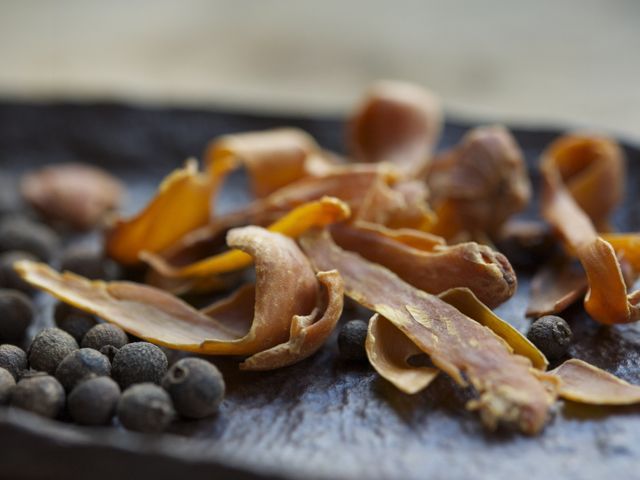
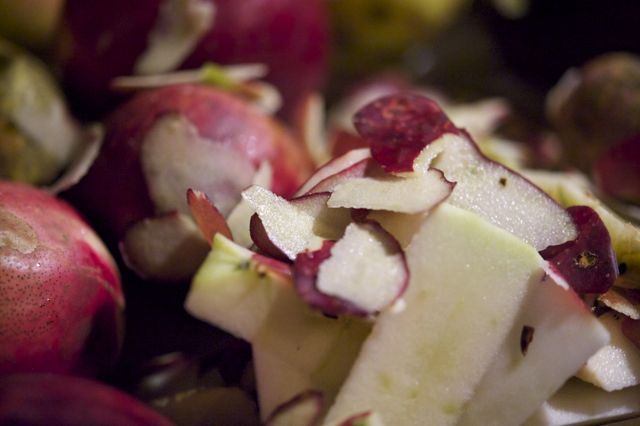
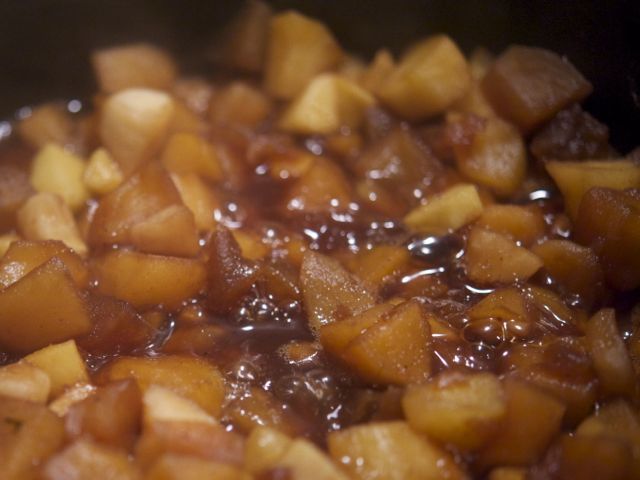
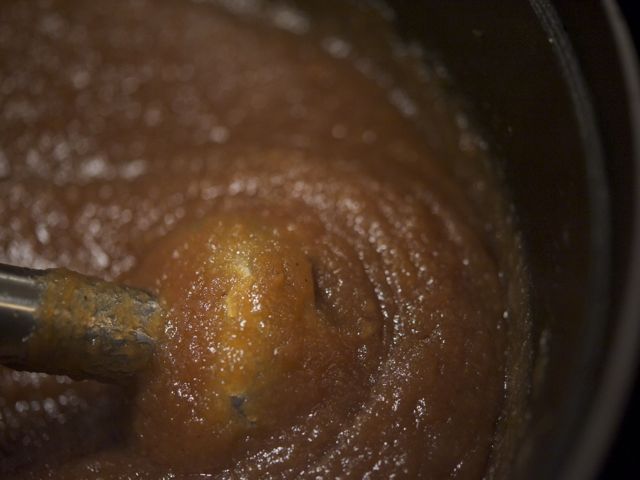
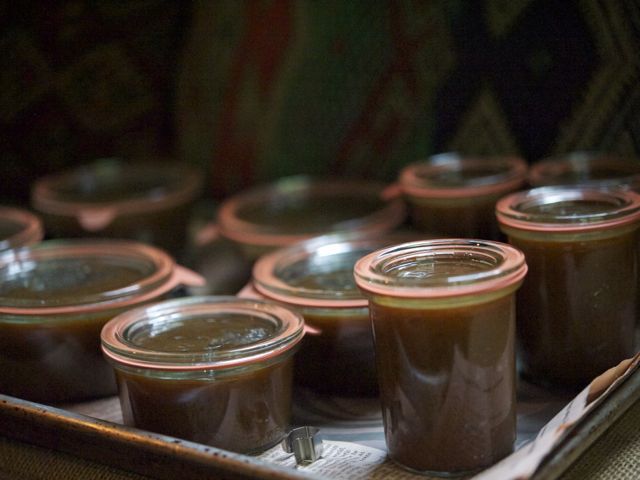
0 Comments